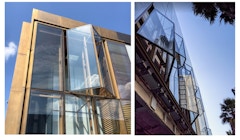Contextualizing Glass and Carbon Impacts
Climate change goals will require significant improvements in the way buildings are constructed and operated. Building reuse can combat climate…








Fidelity between the built enclosure and early visualizations is rarely, if ever, an accident. When achieved, it comes as the result of persistent







